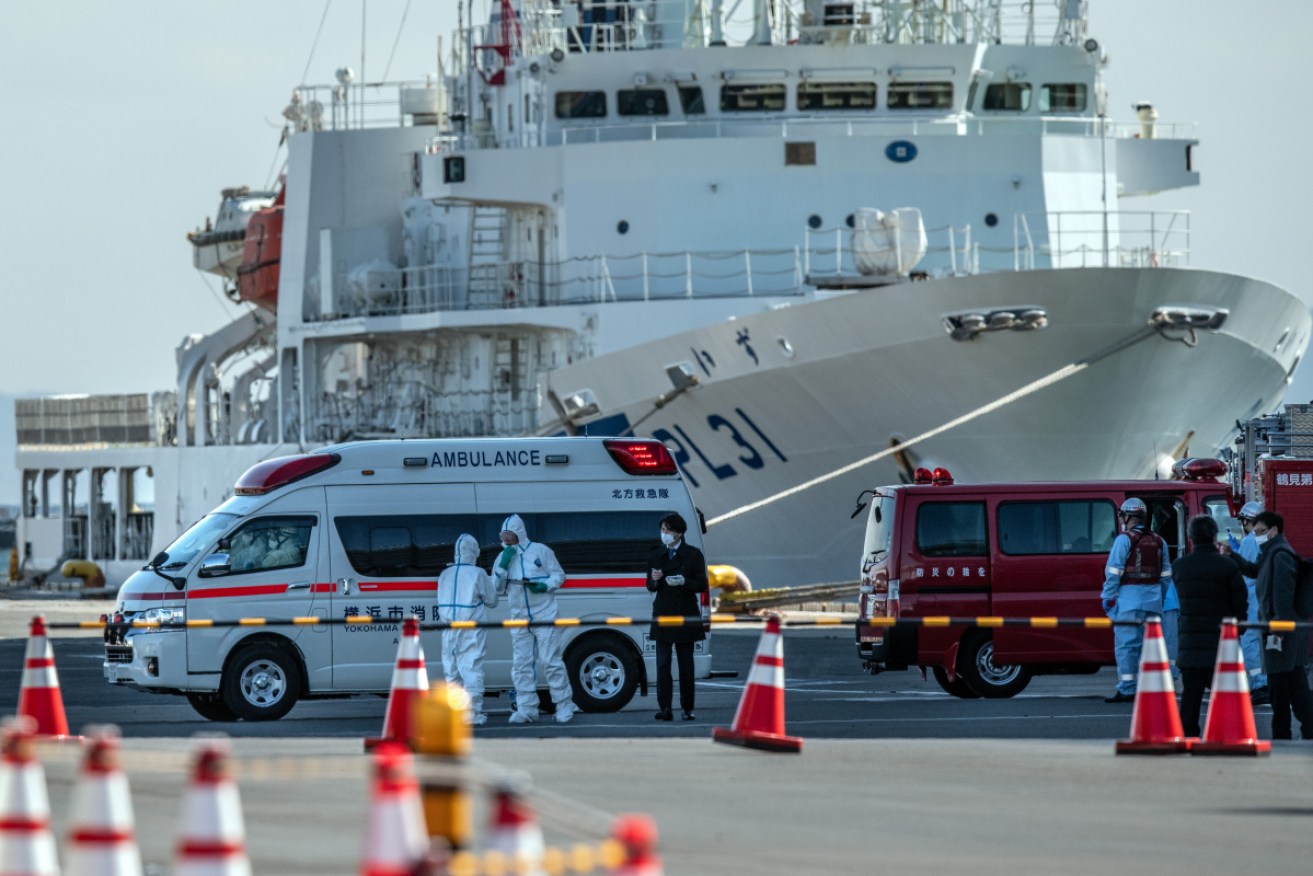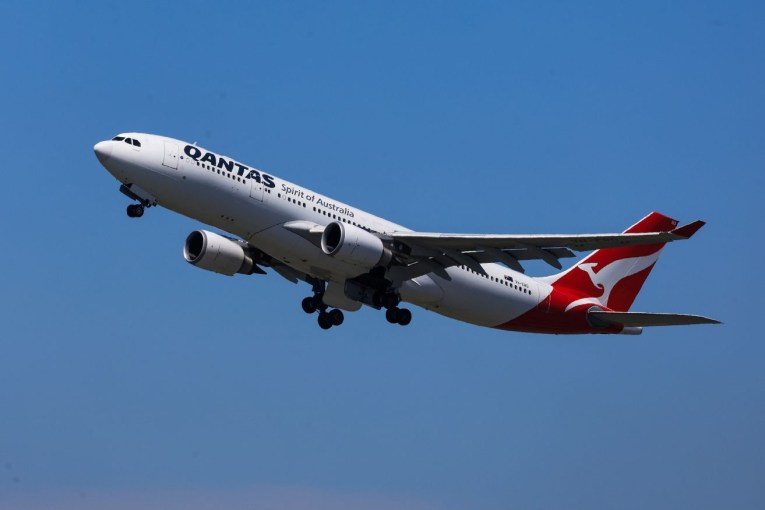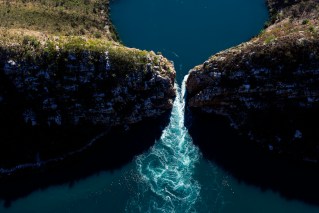From planes to cruise ships: What travellers should know about the coronavirus


The Diamond Princess is in lockdown in Yokohama as Japanese authorities battle to contain the coronavirus. Photo: Getty
As the novel coronavirus spreads, its impact on travellers and the tourism industry is growing, with two cruise ships carrying 5400 people quarantined in Asia this week.
As of Thursday morning, there were 14 confirmed cases of 2019-nCoV in Australia while internationally, there were around 25,000 confirmed cases and nearly 500 deaths.
Dr Farhid Hemmatzadeh, an Associate Professor in Virology at the University of Adelaide, said that travellers are at heightened risk of catching respiratory infections including the coronavirus.
“Viruses love two things: movement, and dense populations,” Dr Hemmatzadeh explained.
“Wherever we have dense populations and a huge amount of movement, the risk of the virus spreading, particulary respiratory viruses, is much higher.”
Travel has played a major role in spreading the Wuhan coronavirus, Dr Hemmatzadeh said.
Planes and cruise ships host a “very dense population of people”, and if just one person is infected actively (showing clinical signs of disease and shedding the virus) or passively (not showing symptoms) everyone on board is at risk.
“It is expected with the level of air travel and cruise ships, that this virus will spread all around the world very rapidly,” Dr Hemmatzadeh said.
On Monday, Japanese authorities put the Diamond Princess cruise ship into lockdown after an ill passenger was confirmed to have the coronavirus.
Around 3700 passengers and crew are being quarantined, including more than 200 Australians, two of which are among the 10 people on board who have tested positive for the virus.
The outbreak has been attributed to a passenger infected with the deadly virus flew into Tokyo and spent several days aboard the ship.
Despite the scare, the Australian government has not altered its advice for those travelling to Japan, which remains to “exercise normal safety precautions” when travelling to the nation.
Paul and Jacqui Fidrmuc, from Cairns, are among those on board the Diamond Princess. They have been tested for coronavirus, but said they were learning more from the media about their situation than from the cruise company.
“The concern we have is we might have the virus and we don’t have the symptoms,” Mr Fidrmuc said.
“It’s a frightening situation but it is not a disease where if you get it, it’s certain death. You just have to be lighthearted about the whole situation.”
On Wednesday, Hong Kong authorities suspended the city’s two cruise terminals after they were forced to quarantine the 1800 passenger World Dream cruise ship.
Passengers and crew have been forbidden from disembarking while authorities conduct coronavirus tests in an effort to prevent further spread of the epidemic.
The risk of infection aboard a cruise ship is “much higher” than aboard a plane, Dr Hemmatzadeh said, as passengers are on board a cruise ship for weeks as opposed to hours, and stop over at multiple locations.
However, air travel also helps spread diseases, particularly respiratory diseases that are spread through droplets of saliva via coughing, sneezing, and talking, Dr Hemmatzadeh said.
“There may be people with no clinical signs [of disease] coughing billions of virus particles that are spreading all around the plane,” he said.
People vulnerable to respiratory infections including those with compromised immune systems, children, and the elderly should “consider when and where they want to travel’, Dr Hemmatzadeh said.
Travelling puts you at a higher risk of getting sick.”
However, while there are still many unknowns about the latest strain of coronavirus, the “chance for human-to-human transmission is not that high” compared to other severe respiratory diseases such as influenza.
Government’s advice to travellers
The Australian government last week tightened restrictions on people travelling from mainland China to Australia, while Qantas announced it would suspend flights to mainland China from February 9 to March 29.
On Thursday, the government said it was taking “a highly precautionary approach based on the latest and best medical advice”.
“Australia remains vigilant about this virus and how it is developing,” the statement said in a statement on the Smartraveller website.
“We have in place border, isolation, surveillance and case tracing mechanisms.”
Australia’s health emergency response arrangements are “flexible and scalable”, and “ill be tailored to respond to the situation as we learn more about the virus and how it spreads”, the statement said.
Mainland China
- The advice of the Department of Foreign Affairs and Trade (DFAT) for travel to mainland China is ‘level 4 – do not travel’.
- Travel restrictions apply to people entering Australia having left mainland China after February 1
Hong Kong
- DFAT’s advice for travel to Hong Kong is ‘level 2 – exercise a high degree of caution’, due to ongoing civil unrest, not the coronavirus.
- Passengers departing or transiting through Hong Kong International Airport will undergo temperature checks. Passengers with fevers will not be allowed to board their flight.
Coronavirus Health Information Line: 1800 020 080
-with AAP








